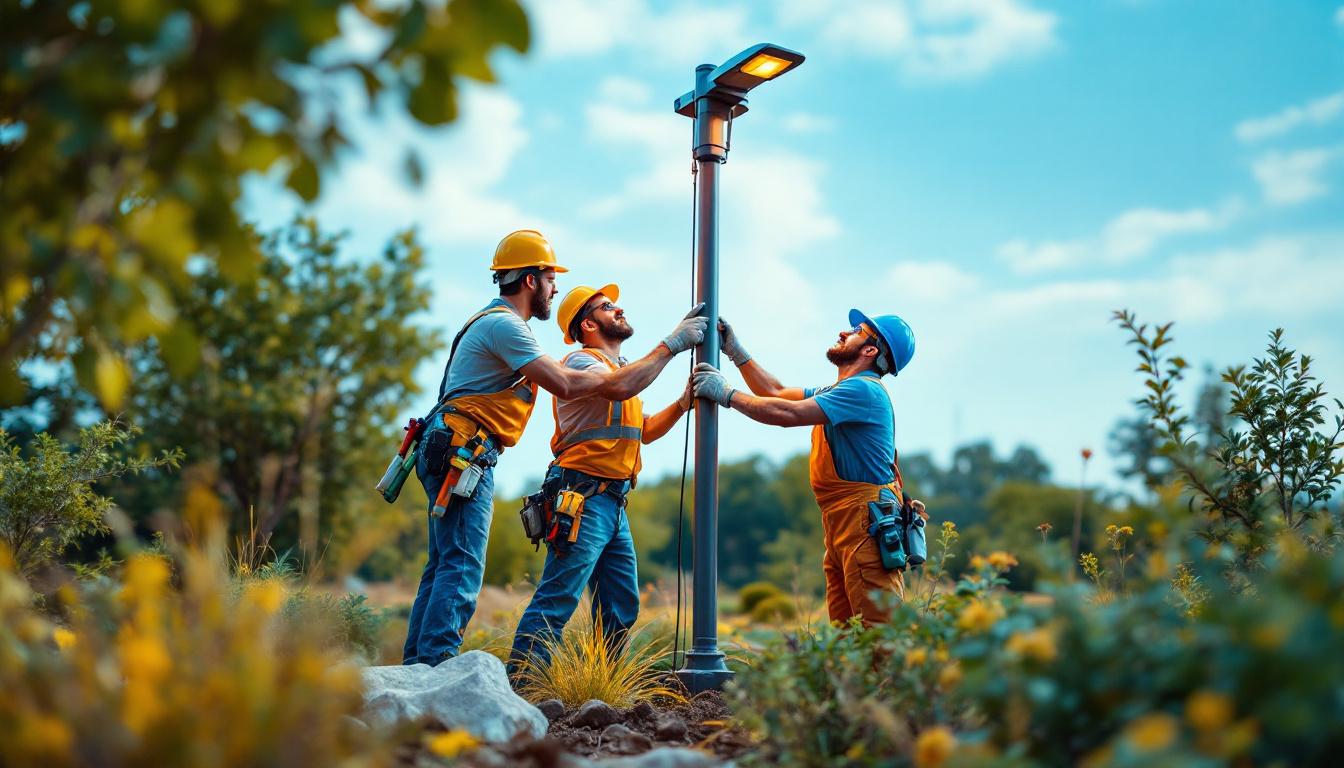
In the ever-evolving world of agriculture and horticulture, the demand for innovative solutions continues to rise. One of the most significant advancements in recent years is the use of specialized growing lights for vegetables. For lighting contractors, understanding the nuances of these systems can not only enhance their service offerings but also significantly boost their business. This article delves into the importance of growing lights for vegetables, the role of lighting contractors, and strategies to leverage this trend for business growth.
As urban farming and indoor gardening gain popularity, the need for effective lighting solutions has become paramount. Growing lights simulate natural sunlight, providing the necessary spectrum for photosynthesis and plant growth. These lights are essential for commercial growers, hobbyists, and anyone looking to cultivate vegetables indoors or in controlled environments.
Different plants have varying light requirements, which can be categorized into three main types: low, medium, and high light. Low-light vegetables, such as leafy greens, thrive in less intense light, while fruiting plants like tomatoes and peppers require more substantial light exposure. Understanding these requirements is crucial for lighting contractors to recommend the right solutions to their clients.
Moreover, the duration of light exposure, known as photoperiod, plays a vital role in plant development. Some plants require long days to flower, while others prefer shorter days. This knowledge allows contractors to customize lighting systems that cater to specific plant needs, ensuring optimal growth and yield. Additionally, the intensity and quality of light can affect not only the rate of growth but also the flavor and nutritional content of the vegetables produced. For instance, certain wavelengths of light can enhance the production of phytochemicals, which are beneficial for human health, thereby making the understanding of light spectrum even more critical for successful indoor gardening.
There are several types of growing lights available on the market, each with its advantages and disadvantages. The most common types include LED, fluorescent, and HID (High-Intensity Discharge) lights. LED lights are increasingly popular due to their energy efficiency and longevity, making them a cost-effective option for growers.
Fluorescent lights are often used for seedlings and young plants, as they provide a balanced spectrum and are easy to install. On the other hand, HID lights are favored for larger operations due to their high output and ability to cover extensive areas. Understanding these options enables lighting contractors to provide tailored solutions that meet their clients’ specific needs. Furthermore, advancements in technology have led to the development of smart lighting systems that can be controlled remotely, allowing growers to adjust light intensity and duration based on real-time data. This innovation not only optimizes plant growth but also enhances energy efficiency, making it an attractive option for both novice and experienced growers alike.
Lighting contractors play a pivotal role in the implementation of growing lights for vegetables. Their expertise not only helps in selecting the right lighting systems but also ensures proper installation and maintenance. As the demand for indoor gardening solutions increases, the role of these professionals becomes even more critical.
One of the primary responsibilities of lighting contractors is to consult with clients to understand their specific requirements. This involves assessing the space available for growing, the types of vegetables being cultivated, and the desired yield. By gathering this information, contractors can recommend the most suitable lighting systems that align with the client’s goals.
Customization is key in this process. Each grower’s setup is unique, and a one-size-fits-all approach may not yield the best results. Contractors who take the time to tailor solutions are more likely to build lasting relationships with their clients, leading to repeat business and referrals. Furthermore, by staying updated on the latest advancements in horticultural lighting technology, contractors can offer innovative solutions that enhance plant growth and energy efficiency. This knowledge not only positions them as experts in the field but also reassures clients that they are making informed decisions for their indoor gardens.
Proper installation of growing lights is crucial for maximizing their effectiveness. Lighting contractors must ensure that the lights are positioned correctly to provide even coverage and avoid hotspots that could damage plants. Additionally, they should educate clients on the importance of maintaining their lighting systems, including regular cleaning and bulb replacement.
Offering maintenance services can also be a lucrative avenue for contractors. Regular check-ups can help prevent issues and ensure that the lighting systems continue to function optimally. This proactive approach not only enhances client satisfaction but also creates additional revenue streams for the contractor. Moreover, contractors can provide clients with valuable insights into the best practices for light scheduling and intensity adjustments, which can significantly impact plant health and productivity. By fostering a collaborative relationship, lighting contractors can empower growers to achieve their desired outcomes while also positioning themselves as indispensable partners in the journey of indoor gardening.
As the market for indoor gardening continues to expand, lighting contractors have a unique opportunity to capitalize on this trend. By integrating growing lights into their service offerings, contractors can attract a broader client base and increase their revenue potential.
Incorporating growing lights into a contractor’s portfolio can significantly enhance their service offerings. This expansion allows contractors to cater to a diverse range of clients, from commercial growers to urban gardeners. By positioning themselves as experts in growing lights, contractors can differentiate themselves from competitors and become the go-to source for indoor gardening solutions.
Moreover, offering bundled services that include consultation, installation, and maintenance can create a comprehensive package that appeals to clients. This approach not only simplifies the process for the customer but also increases the contractor’s profitability.
Effective marketing is essential for promoting growing lights and attracting new clients. Contractors should leverage digital marketing strategies, such as social media, email campaigns, and search engine optimization, to reach potential customers. Sharing informative content about the benefits of growing lights can position contractors as thought leaders in the industry.
Additionally, participating in local gardening events, trade shows, and workshops can help contractors connect with their community and showcase their expertise. Providing demonstrations of growing lights in action can also generate interest and encourage potential clients to consider investing in these systems.
While the opportunities for lighting contractors in the growing lights market are significant, there are challenges to consider. Understanding these challenges can help contractors navigate the landscape more effectively and position themselves for success.
The technology surrounding growing lights is continually evolving, with new products and advancements emerging regularly. Lighting contractors must stay informed about the latest developments to provide their clients with the best solutions. This may involve attending industry conferences, participating in training sessions, and engaging with manufacturers to understand product specifications and benefits.
By staying updated, contractors can offer informed recommendations and ensure that their clients are utilizing the most efficient and effective lighting systems available.
Another challenge is accurately understanding and meeting client needs. Each client may have different goals, budgets, and preferences, making it essential for contractors to engage in thorough consultations. Taking the time to listen to clients and ask the right questions can lead to more successful outcomes and satisfied customers.
Building strong relationships with clients can also help contractors gain insights into their evolving needs, allowing them to adapt their services accordingly. This client-centric approach fosters loyalty and encourages repeat business.
The future of growing lights in agriculture looks promising, with increasing interest in sustainable and efficient farming practices. As more individuals and businesses recognize the benefits of indoor gardening, the demand for effective lighting solutions will continue to rise.
Energy efficiency is a growing concern in all sectors, including agriculture. As the push for sustainable practices intensifies, lighting contractors must focus on providing energy-efficient solutions that minimize environmental impact. LED technology, for instance, is leading the way in this regard, offering significant energy savings compared to traditional lighting options.
Contractors who prioritize energy-efficient products can not only help their clients save on electricity costs but also position themselves as environmentally conscious providers, appealing to a broader audience.
As technology continues to advance, the integration of smart technology into growing lights is becoming increasingly common. Smart lighting systems allow for remote control, automation, and data collection, enabling growers to optimize their lighting conditions based on real-time feedback.
Lighting contractors who embrace these technologies can offer cutting-edge solutions that enhance the growing experience for their clients. By staying ahead of the curve, contractors can position themselves as innovators in the industry, attracting tech-savvy clients who seek the latest advancements in indoor gardening.
Growing lights for vegetables represent a significant opportunity for lighting contractors looking to expand their business and cater to the evolving needs of the agricultural sector. By understanding the importance of these systems, offering tailored solutions, and staying updated with industry advancements, contractors can position themselves as leaders in the market.
As the demand for indoor gardening continues to grow, so does the potential for lighting contractors to thrive. By embracing this trend and adapting to the changing landscape, contractors can not only boost their business but also contribute to a more sustainable and efficient agricultural future.
Ready to elevate your lighting game and drive your business forward? Look no further than LumenWholesale for a comprehensive range of high-quality, spec-grade growing lights at unbeatable wholesale prices. Our selection is designed to meet the highest industry standards, ensuring you provide your clients with reliable and high-performance lighting solutions. With the convenience of free shipping and bulk buying, you can secure premium lighting at the best value — all without hidden fees or compromises. Take the first step towards a brighter, more sustainable future in agriculture by visiting Wholesale Lighting at the Best Value and discover how we can help you shine.

Learn how to install a post light pole and effectively train your team in lighting installation.

Discover expert tips on troffer retrofit kit LED installations, boosting energy efficiency by up to 50%, reducing costs, and enhancing lighting quality—perfect for contractors seeking smart solutions..

Discover how LED interior wall lights can revolutionize cost efficiency for lighting contractors.

Discover essential insights and expert advice for lighting contractors in our comprehensive guide on Light Bulb Depot.